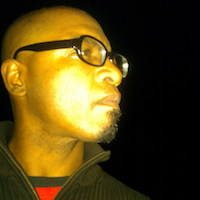 Xavier Leonard is a designer, educator and ICT (information and communications technology) activist. He was the founding director of Heads on Fire and the Heads on Fire Fab Lab. The Heads on Fire program was selected as a national model in the U.S. for teaching technology in out-of-school settings. In 2010, he created Designers for Humanity, a model for delivering science, technology, engineering and mathematics (STEM) experiences through a service-learning project aimed at fostering innovation and providing an engineering solution for a specific community problem.
Xavier Leonard is a designer, educator and ICT (information and communications technology) activist. He was the founding director of Heads on Fire and the Heads on Fire Fab Lab. The Heads on Fire program was selected as a national model in the U.S. for teaching technology in out-of-school settings. In 2010, he created Designers for Humanity, a model for delivering science, technology, engineering and mathematics (STEM) experiences through a service-learning project aimed at fostering innovation and providing an engineering solution for a specific community problem.
Leonard has been honored as a Z-Fellow of the Zero Divide Foundation, an Ideas Institute Fellow of the MIT Media Lab, and a TEC Champion by the United States Congress. His “experience” design projects have been presented at the Institute of Contemporary Art, London; the Institute of Contemporary Art, Philadelphia; The Henry Art Gallery, Seattle; Franklin Furnace, NYC; The Knitting Factory, NYC; and the Centre International Francais, Ouagadougo, Burkina Faso, among other venues. His work has been supported by the Western States Arts Federation Fellowship; the Pennsylvania Council of the Arts; the Institute of International Education; the Pew Fellowship in the Arts and New American Radio.
Leonard has spoken on the deployment of technology to empower and develop communities at the United Nationsʼ World Summit on the Information Society in Tunis, Tunisia; the Air Jaldi Summit on Wireless Technologies in Dharamsala, India; the International Summit for Community Wireless Networks; the Nonprofit Technology Network Conference; the Community Technology Center Network Conference; TEDx Americaʼs Finest City and other national and global events.
Audio recordings are made at interior sites (restaurants, stores, salons, etc.) along a 433 meter span in Leonard’s southeast San Diego neighborhood. Multiples recordings are made inside each site and each recording is geotagged. The result is a set of files that constitute a geospatial audio portrait of those interiors. A similar portrait will be made of an analogous Long Beach cityspan. Using an Augmented Reality development platform, the sounds of one cityspan will be mapped to the coordinates of the other.